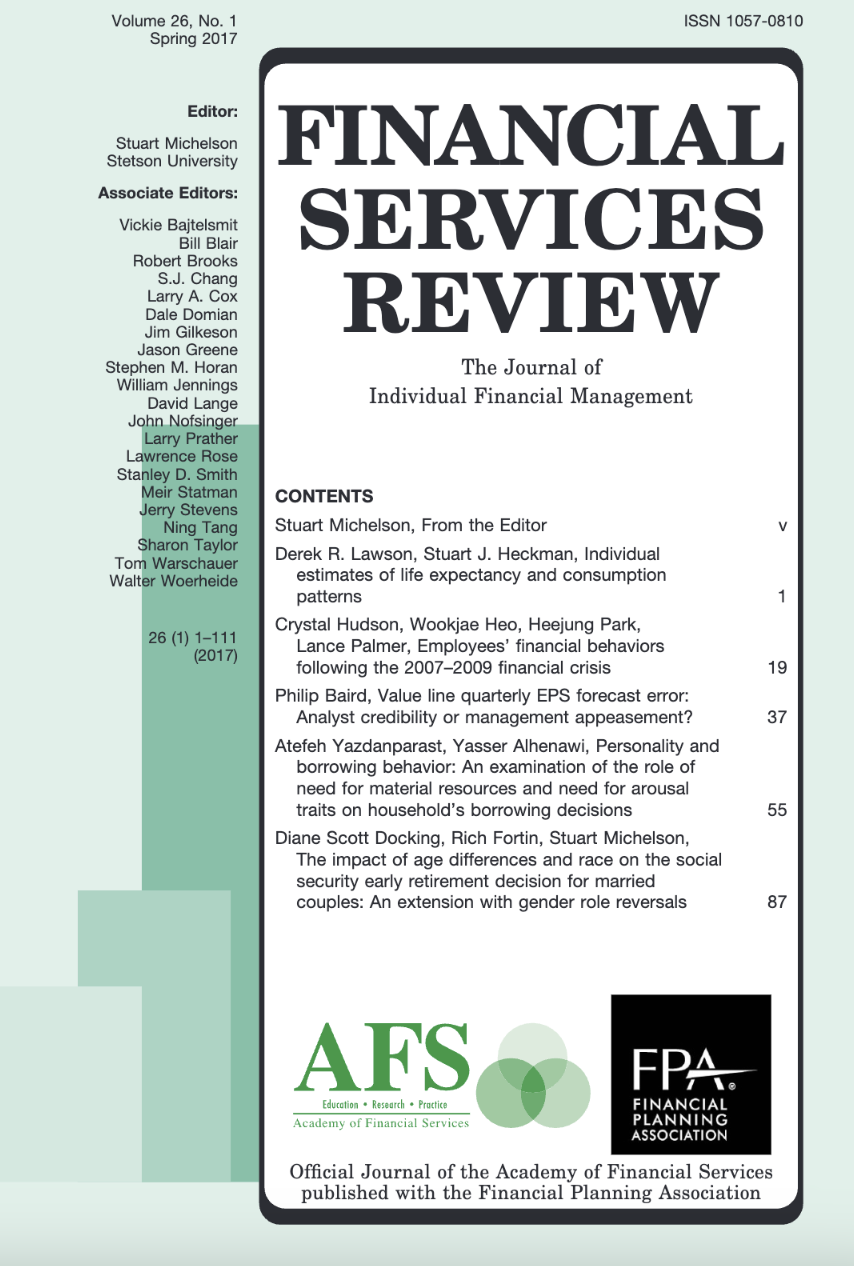The impact of age differences and race on the social security early retirement decision for married couples
An extension with gender role reversals
DOI:
https://doi.org/10.61190/fsr.v26i1.3297Abstract
The purpose of this study is to examine the impact of age differences on the social security early and delayed retirement decision for married couples. This article extends the analysis of Docking, Fortin, and Michelson’s 2015 study that assumed the working spouse (male) was older than the non-working spouse (female). In this current study we reverse the spouse and spouse employment role and ages. We now assume a working spouse (female) who is older than her non-working spouse (male). We analyze the nine married couple combinations for the following races: Whites (W), Hispanics (H), and Blacks (B). We develop an Excel model to compute the breakeven internal rate of return (BE IRR) for each of nine race combinations. Three claiming scenarios are considered: receiving benefits early (e.g., at age 62 vs. 66), the maximum realistic delay period (e.g., at age 62 vs. 70), and delaying benefits past full retirement age (e.g., age 66 vs. 70). Within these three claiming scenarios we examine couples by race combination who retire at the same age and at different ages, and with age differences of 0, 4, 7, and 10 years. We compare the results of the two studies. The primary substantive conclusions from this study depends on the age comparisons that are being made. For couples who retire at the same age or at different ages, the greater the age difference the greater the incentive to retire early as the hurdle rate is lower to overcome. This is true irrespective who is older and the breadwinner (earning spouse). Women almost always have higher BE IRRs than men. The implication is that in marriages where the spouse is the breadwinner and the older partner, it is more difficult for the couple to retire early, as compared to marriages where the spouse is the breadwinner and the older partner. Irrespective of who is the breadwinner, Hispanics have higher hurdle rates, whereas Whites have lower hurdle rates. For a given retirement age comparison or age difference the results can be interpreted as follows: the high (low) breakeven group would prefer to retire later (earlier) because the hurdle rate is more difficult (less difficult) to overcome. Thus, Hispanics have a more difficult time retiring early, whereas Whites have a less difficult time retiring early.
Downloads
Published
How to Cite
Issue
Section
License
Copyright (c) 2014 Academy of Financial Services

This work is licensed under a Creative Commons Attribution-NonCommercial 4.0 International License.
Author(s) retain copyright and grant the Journal right of first publication with the work simultaneously licensed under a Creative Commons Attribution-NonCommercial 4.0 International License that allows to share the work with an acknowledgment of the work's authorship and initial publication in this Journal.
This license allows the author to remix, tweak, and build upon the original work non-commercially. The new work(s) must be non-commercial and acknowledge the original work.


